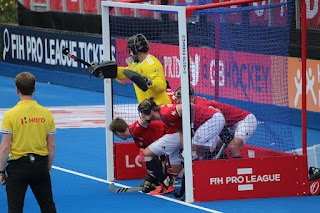Field Hockey Sticks
Field hockey sticks are more than just tools; they're an extension of a player's skill and style. The right stick can enhance control, power, and accuracy, ultimately elevating a player's performance on the field.
Anatomy of a Field Hockey Stick
Understanding the components of a field hockey stick is essential before delving into the selection process.
The Shaft
The shaft forms the main body of the stick, providing stability and control. Modern sticks are made from various materials, each influencing the stick's performance.
The Head
The head, also known as the "toe," is the part of the stick that makes contact with the ball. Its shape and angle significantly impact ball control, making it a crucial consideration.
The Toe
The toe's shape can vary between the hook, midi, and short designs. Each offers distinct advantages, such as better drag-flicking or dribbling control.
The Grip
The grip is where the player holds the stick. It's important to find a comfortable grip size and texture that allows for precise handling during gameplay.
Understanding Stick Composition
Field hockey sticks come in two main types: wood and composite. Each has its own set of characteristics that cater to different playing styles.
Wood Sticks
Wood sticks are classic and favored by some players for their traditional feel. They offer a softer touch on the ball but might lack the power and durability of composite sticks.
Composite Sticks
Composite sticks are crafted from a blend of materials like carbon, fiberglass, and Kevlar. They offer more power, control, and versatility, making them popular among modern players.
Choosing the Right Stick Length
Stick length is a matter of personal preference and playing style. A longer stick provides an extended reach, while a shorter one offers better maneuverability.
Selecting the Appropriate Bow Shape
The bow shape refers to the curve of the stick. A lower bow assists with ball control and dribbling, while a higher bow aids in powerful shots and aerial passes.
Balancing Weight and Power
The weight of a stick affects how it feels during play. Lighter sticks offer agility, while heavier ones provide more power. Balancing the two is crucial for optimal performance.
The Impact of Skill Level
Beginners and experienced players might opt for different stick characteristics. Beginners benefit from more forgiving sticks, while advanced players can harness specialized features.
Caring for Your Field Hockey Stick
Proper maintenance extends the lifespan of your stick. Wipe it clean after play, store it indoors, and avoid extreme temperatures to prevent warping or cracking.
Upgrading Your Stick: When and Why
As your skills grow, your stick should evolve to match your playing style. Upgrading at the right time can unlock new possibilities and improvements in your game.
Enhancing Performance with the Right Stick
The right stick can enhance various aspects of your game, from accurate passing and powerful shooting to precise trapping and solid defense.
Breaking in a New Stick: Tips and Tricks
New sticks might require a bit of breaking in for optimal performance. Practice basics like dribbling and passing to get accustomed to its feel and responsiveness.
Ensuring Comfortable Grip and Handling
A proper grip enhances control and prevents strain. Experiment with different grip styles and techniques to find what works best for you.
The Role of Aesthetics: Personalizing Your Stick
Personalizing your stick isn't just about looks; it's a way to connect with your gear. Custom designs can boost your morale and make your stick easily recognizable.
Staying Within Your Budget: Stick Price Ranges
Field hockey sticks come in a wide price range. While high-end sticks offer advanced features, mid-range options can still provide excellent performance without breaking the bank.
Conclusion
Your field hockey stick is your loyal companion on the field, reflecting your skills and determination. Understanding its components, and materials, and how they align with your style of play is crucial for optimal performance. Selecting the perfect stick might take some trial and error, but the right choice will undoubtedly elevate your game.




Comments
Post a Comment